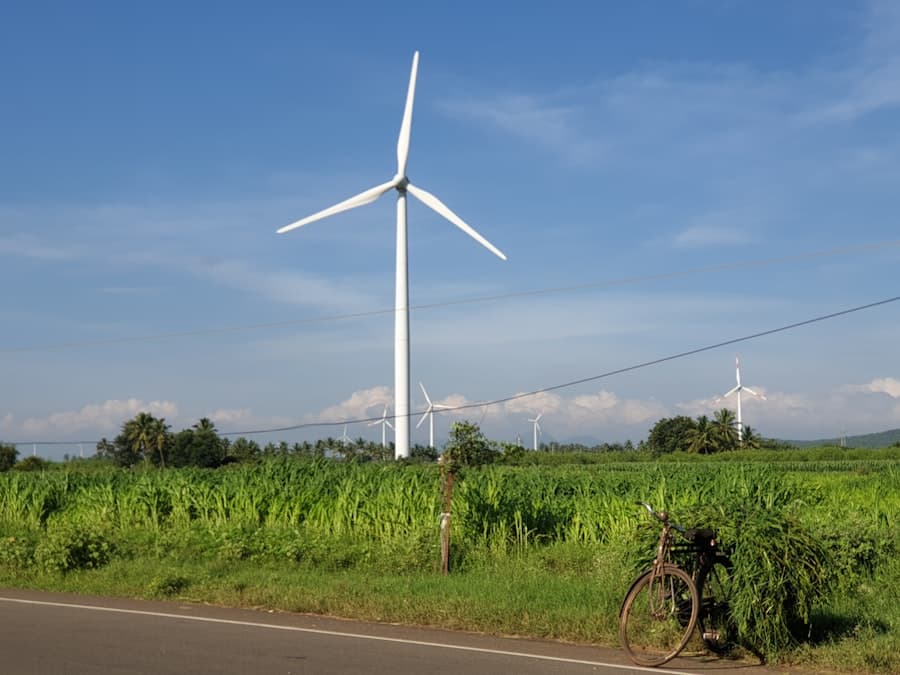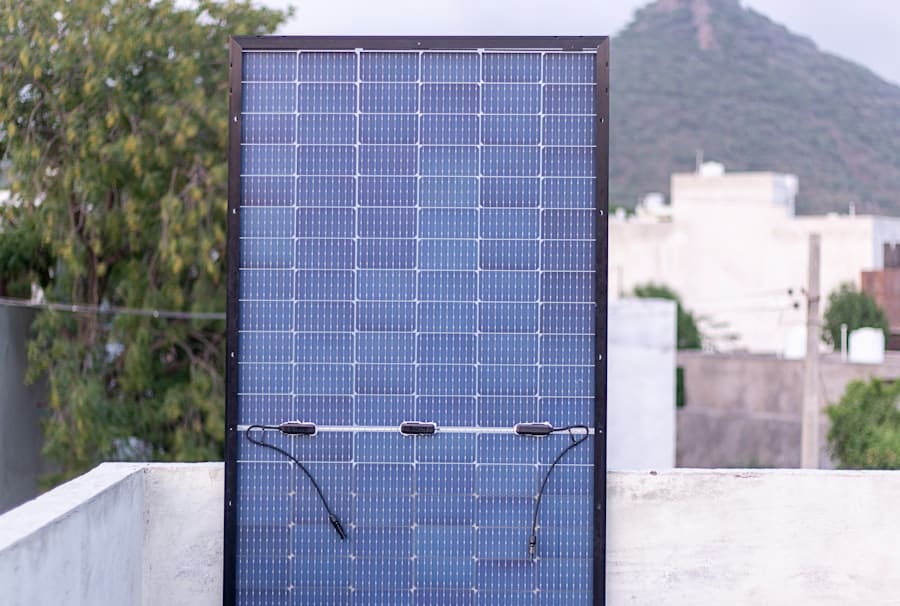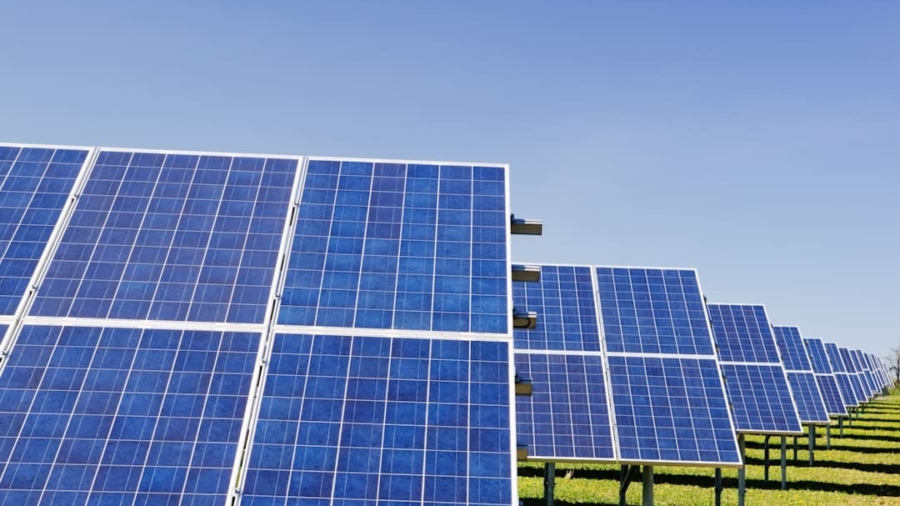The intersection of artificial intelligence (AI) and renewable energy solutions represents a transformative shift in how we approach energy generation, distribution, and consumption. As the world grapples with the pressing challenges of climate change and the depletion of fossil fuels, the integration of AI technologies into renewable energy systems offers innovative pathways to enhance efficiency, reliability, and sustainability. AI’s ability to analyze vast amounts of data, recognize patterns, and make real-time decisions positions it as a critical tool in optimizing renewable energy resources such as solar, wind, hydroelectric, and geothermal power.
The urgency for a transition to renewable energy sources is underscored by the increasing global demand for energy and the need to reduce greenhouse gas emissions. According to the International Energy Agency (IEA), renewable energy sources accounted for nearly 30% of global electricity generation in 2020, a figure that is expected to rise significantly in the coming years. AI technologies can facilitate this transition by improving the performance of renewable energy systems, enhancing grid stability, and enabling smarter energy consumption practices.
By harnessing AI, stakeholders in the energy sector can not only meet regulatory requirements but also drive economic growth and foster environmental stewardship.
Key Takeaways
- AI plays a crucial role in advancing renewable energy solutions by optimizing energy forecasting and grid management.
- AI-driven predictive maintenance helps in ensuring the reliability and longevity of renewable energy infrastructure.
- Energy storage and grid management are enhanced through AI-enabled technologies, improving efficiency and reliability.
- Smart grids integrated with AI technology enable efficient energy distribution and management.
- AI-based demand response and energy consumption management contribute to optimizing energy usage and reducing waste.
AI Applications in Energy Forecasting and Optimization
One of the most significant applications of AI in renewable energy is its role in energy forecasting and optimization. Accurate forecasting of energy production from renewable sources is crucial for effective grid management and ensuring a stable supply of electricity. Traditional forecasting methods often rely on historical data and simplistic models that may not account for the complexities of weather patterns or other influencing factors.
In contrast, AI algorithms, particularly machine learning models, can analyze vast datasets that include weather forecasts, historical production data, and real-time sensor inputs to generate highly accurate predictions. For instance, companies like Google have implemented AI-driven forecasting systems for their solar energy projects. By utilizing deep learning techniques, they have been able to predict solar power generation with remarkable precision, allowing them to optimize their energy dispatch strategies.
This capability not only maximizes the utilization of renewable resources but also minimizes reliance on fossil fuel-based backup systems. Furthermore, AI can optimize energy consumption patterns by analyzing user behavior and preferences, leading to more efficient use of generated power. In addition to forecasting, AI plays a pivotal role in optimizing the operation of renewable energy systems.
Advanced algorithms can dynamically adjust operational parameters based on real-time data inputs, ensuring that systems operate at peak efficiency. For example, wind farms equipped with AI technologies can optimize turbine performance by adjusting blade angles in response to changing wind conditions. This level of optimization not only enhances energy output but also extends the lifespan of equipment by reducing wear and tear.
AI-Driven Predictive Maintenance for Renewable Energy Infrastructure

The maintenance of renewable energy infrastructure is critical for ensuring long-term operational efficiency and reliability. Traditional maintenance practices often rely on scheduled inspections or reactive measures following equipment failures, which can lead to costly downtimes and reduced energy production. AI-driven predictive maintenance offers a more proactive approach by leveraging data analytics to anticipate equipment failures before they occur.
By employing machine learning algorithms that analyze historical performance data, sensor readings, and environmental conditions, operators can identify patterns that indicate potential issues. For example, in wind turbines, AI can monitor vibration levels, temperature fluctuations, and other operational metrics to detect anomalies that may signal impending mechanical failures. This predictive capability allows maintenance teams to address issues before they escalate into significant problems, thereby minimizing downtime and maintenance costs.
Moreover, companies like Siemens Gamesa have integrated AI into their maintenance strategies for wind farms. Their predictive maintenance solutions utilize real-time data from turbine sensors to forecast when components are likely to fail or require servicing. This approach not only enhances operational efficiency but also improves safety by reducing the need for personnel to perform inspections in hazardous conditions.
As a result, AI-driven predictive maintenance is becoming an essential component of modern renewable energy management practices.
AI-Enabled Energy Storage and Grid Management
Energy storage systems are vital for balancing supply and demand in renewable energy generation, particularly given the intermittent nature of sources like solar and wind. AI technologies are increasingly being employed to enhance the efficiency and effectiveness of energy storage solutions. By analyzing consumption patterns and predicting future demand, AI can optimize the charging and discharging cycles of batteries or other storage systems.
For instance, Tesla’s Powerwall utilizes AI algorithms to learn from user behavior and local grid conditions. This enables the system to determine the optimal times for charging from the grid or discharging stored energy based on electricity prices and demand forecasts. Such intelligent management not only maximizes cost savings for consumers but also contributes to grid stability by ensuring that stored energy is available during peak demand periods.
In addition to optimizing individual storage systems, AI plays a crucial role in overall grid management. Smart grids equipped with AI capabilities can analyze real-time data from various sources to manage electricity flow more effectively. This includes integrating distributed energy resources (DERs) such as rooftop solar panels and electric vehicles into the grid.
By coordinating these resources intelligently, AI can enhance grid resilience and reduce reliance on centralized power plants.
AI-Integrated Smart Grids for Efficient Energy Distribution
The concept of smart grids represents a significant evolution in how electricity is distributed and consumed. By integrating AI technologies into smart grid systems, utilities can achieve greater efficiency and reliability in energy distribution. Smart grids utilize advanced communication technologies to gather data from various points within the grid, enabling real-time monitoring and control of electricity flow.
AI algorithms can process this data to optimize load balancing across the grid, ensuring that supply meets demand while minimizing losses during transmission. For example, during periods of high demand, AI can identify which areas of the grid are experiencing strain and reroute power from less congested areas or activate demand response programs to reduce consumption temporarily. Furthermore, smart grids equipped with AI capabilities can facilitate the integration of renewable energy sources more effectively.
By predicting fluctuations in renewable generation due to weather changes or other factors, AI can help utilities manage these resources alongside traditional power plants seamlessly. This integration not only enhances grid stability but also accelerates the transition toward a more sustainable energy landscape.
AI-Based Demand Response and Energy Consumption Management

Demand response programs are essential for managing electricity consumption during peak periods or when renewable generation is low.
AI technologies enhance demand response initiatives by providing insights into consumer behavior and preferences, allowing utilities to tailor their programs more effectively.
For instance, through machine learning algorithms that analyze historical consumption data, utilities can identify patterns in user behavior that indicate when individuals are likely to reduce or shift their energy usage. This information enables utilities to design targeted demand response strategies that encourage participation while minimizing disruption to consumers’ daily routines.
Devices such as smart thermostats or appliances can automatically adjust their operation based on signals from the grid or user preferences. For example, during peak demand periods, a smart thermostat might pre-cool a home before a price spike occurs or delay running a washing machine until electricity prices drop. This level of automation not only benefits consumers through cost savings but also supports grid stability by reducing overall demand during critical times.
AI-Driven Resource Allocation and Renewable Energy Integration
The integration of various renewable energy sources into existing power systems presents unique challenges related to resource allocation and management. AI technologies offer innovative solutions for optimizing resource allocation across diverse energy portfolios. By analyzing data from multiple sources—such as weather forecasts, historical generation patterns, and real-time consumption metrics—AI can determine the most efficient way to allocate resources among different renewable technologies.
For example, during periods of high solar generation due to favorable weather conditions, AI can prioritize solar power dispatch while minimizing reliance on wind or hydroelectric sources that may be less productive at that time. Conversely, when solar generation dips due to cloud cover or nighttime conditions, AI can seamlessly transition to other available resources without compromising grid stability. Additionally, AI-driven resource allocation extends beyond generation optimization; it also encompasses strategic planning for future investments in renewable infrastructure.
By simulating various scenarios based on projected demand growth and technological advancements, utilities can make informed decisions about where to invest in new capacity or upgrade existing facilities.
Future Outlook: AI’s Role in Advancing Renewable Energy Solutions
As we look toward the future, the role of AI in advancing renewable energy solutions is poised to expand significantly. The ongoing development of more sophisticated algorithms and machine learning techniques will enable even greater levels of optimization across all facets of the energy sector—from generation and storage to distribution and consumption management. Emerging technologies such as edge computing will further enhance AI’s capabilities by allowing data processing closer to where it is generated.
This will enable faster decision-making processes and improve responsiveness within smart grids and other energy systems. Additionally, as more devices become interconnected through the Internet of Things (IoT), the volume of data available for analysis will increase exponentially, providing even richer insights for optimizing renewable energy operations. Moreover, regulatory frameworks are likely to evolve alongside technological advancements, creating an environment conducive to innovation in renewable energy solutions powered by AI.
Policymakers will need to consider how best to integrate these technologies into existing infrastructures while ensuring equitable access to clean energy resources for all communities. In conclusion, the synergy between artificial intelligence and renewable energy solutions holds immense potential for transforming our approach to sustainable energy management. As we continue to explore this intersection, it is clear that AI will play a pivotal role in shaping a cleaner, more efficient future for global energy systems.
In the rapidly evolving field of renewable energy, artificial intelligence is playing a pivotal role in optimizing solutions and enhancing efficiency. A related article that delves into the broader impact of technology on various sectors is available on Enicomp’s website. This article, titled “CNET Tracks All the Latest Consumer Technology Breakthroughs,” provides insights into how technological advancements are shaping industries, including renewable energy. You can read more about these technological breakthroughs by visiting the article through this link. This resource offers a comprehensive overview of the latest innovations and their potential applications across different fields.
FAQs
What is AI?
AI, or artificial intelligence, refers to the simulation of human intelligence in machines that are programmed to think and act like humans. This includes tasks such as learning, problem-solving, and decision-making.
How is AI being used in renewable energy solutions?
AI is being used in renewable energy solutions to optimize the efficiency and performance of renewable energy sources such as solar and wind power. It can analyze data to predict energy production, optimize energy storage, and improve overall system performance.
What are the benefits of using AI in renewable energy solutions?
Using AI in renewable energy solutions can lead to increased energy production, reduced operational costs, improved grid stability, and better integration of renewable energy sources into the existing energy infrastructure.
How does AI help in predicting energy production from renewable sources?
AI can analyze historical data, weather patterns, and other relevant factors to accurately predict energy production from renewable sources such as solar and wind power. This helps in better planning and management of energy resources.
What are some examples of AI applications in renewable energy solutions?
Some examples of AI applications in renewable energy solutions include predictive maintenance of renewable energy infrastructure, optimization of energy storage systems, and real-time monitoring and control of renewable energy generation.

